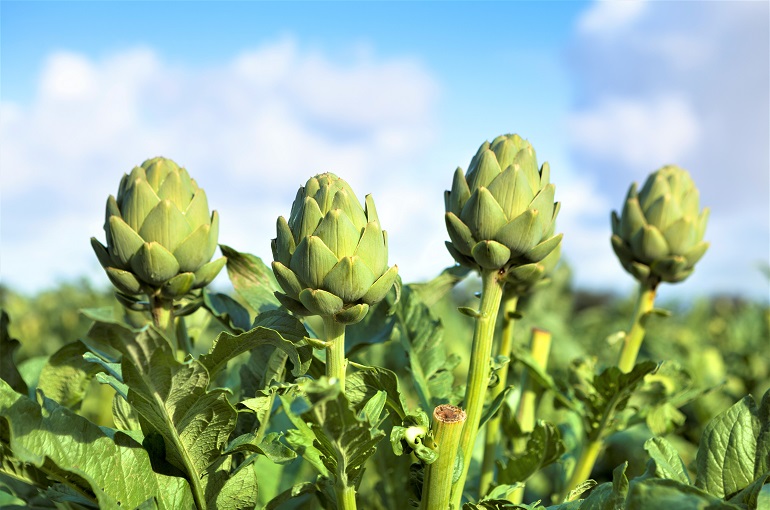Artichoke Plant Information

This post is also available in:
This post is also available in:
![]() Español (Spanish)
Español (Spanish) ![]() Français (French)
Français (French) ![]() Deutsch (German)
Deutsch (German) ![]() العربية (Arabic)
العربية (Arabic) ![]() Türkçe (Turkish)
Türkçe (Turkish) ![]() Ελληνικά (Greek)
Ελληνικά (Greek) ![]() Português (Portuguese (Brazil))
Português (Portuguese (Brazil))
Artichoke is a perennial plant, native to the Mediterranean region. Its good flavor and health benefits have also led to increased crop cultivation as an annual or biennial plant.
The scientific name of the artichoke is Cynara cardunculus var scolymus, a member of the famous Asteraceae family. The plant can develop a deep root system (90-120 cm or 3-4 ft) and an elongated stem growing up to 2 m tall (6.6 ft). It has green-silver long (50-80 cm / 20-30 in) lobed leaves growing from short stems. The flowers appear in a big head, 8-15 cm (3-6 in) diameter, covered in bracts. The color of the flowers is purple, resembling thistle flowers. The edible part is mainly the immature flower buds (the fleshy lower part of the bracts), usually called capitula, heart, or head. Bracts and flower stems are also edible. For the plants to flower, vernalization is needed (some chilling hours). Depending on the variety, around 200-1300 chilling hours (10 ℃ / 50 °F or lower) may be needed for the artichoke plants to produce flowers. Artichokes are classified into two primary types: large, round ‘Globe’ artichokes and elongated, tapered artichokes, thorny or thornless. More specifically, some widely used varieties are the: Green Globe, Imperial Star, Desert Globe, Emerald, Big Heart, Violet d’Hyères, and Green Globe improved.
Artichokes can be propagated by seeds, offshoots, or root crown division, with the last technique being the most common for commercial cultivation. The plants can stay sufficiently productive and vigorous for 5-7 years when grown as perennials. After this period, the grower should replant the field, because plants’ productivity decreases dramatically. Each season starts by cutting back the artichokes to stimulate the growth of new shoots, in mid-spring, start or end of summer, depending on the harvesting moment we want to achieve. When grown as annuals, the plants need 4-6 months from seeding to harvest, depending on the variety and the environmental conditions.
References
https://www.nda.agric.za/docs/Brochures/Artichoke2011.pdf
https://horticulture.oregonstate.edu/oregon-vegetables/artichoke-globe
Artichoke Plant Information
How to Grow Artichokes at Home
How to Grow Artichokes for Profit – Professional Artichoke Farming
Climate and Soil Requirements for Artichoke Farming
Soil Preparation and Planting in Artichoke Farming
Artichoke Water Requirements and Irrigation Systems
Artichoke Fertilization Requirements
Artichoke Farming: Harvest, Yield, Storage, and Post-harvest handling








































































